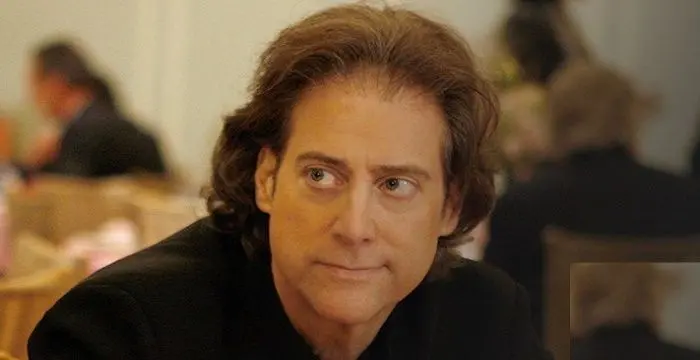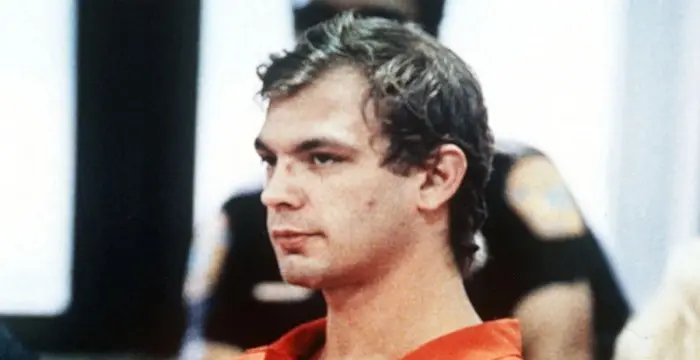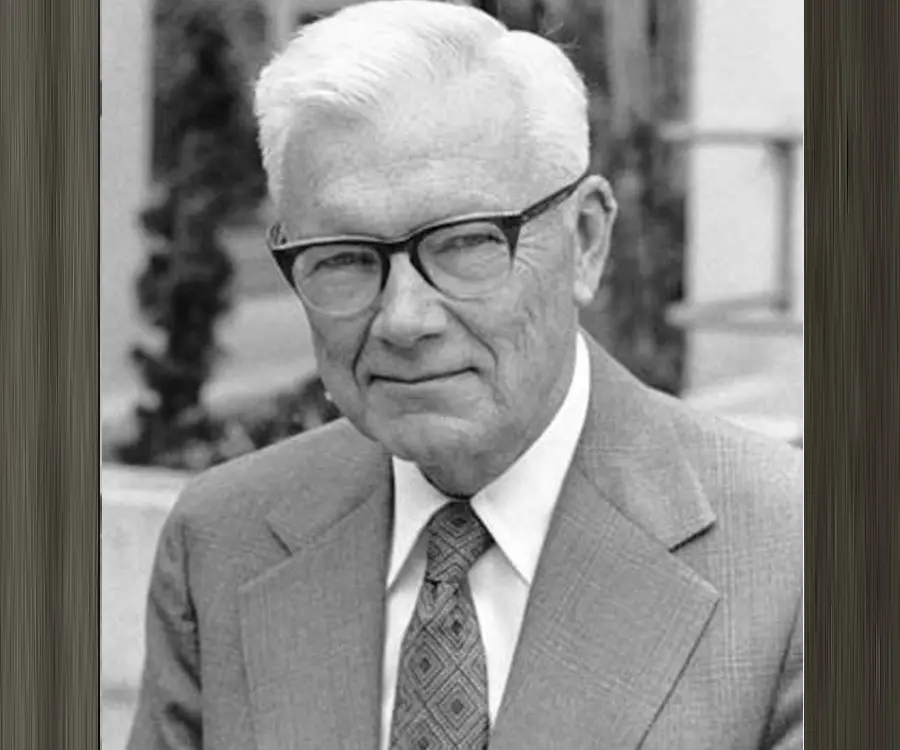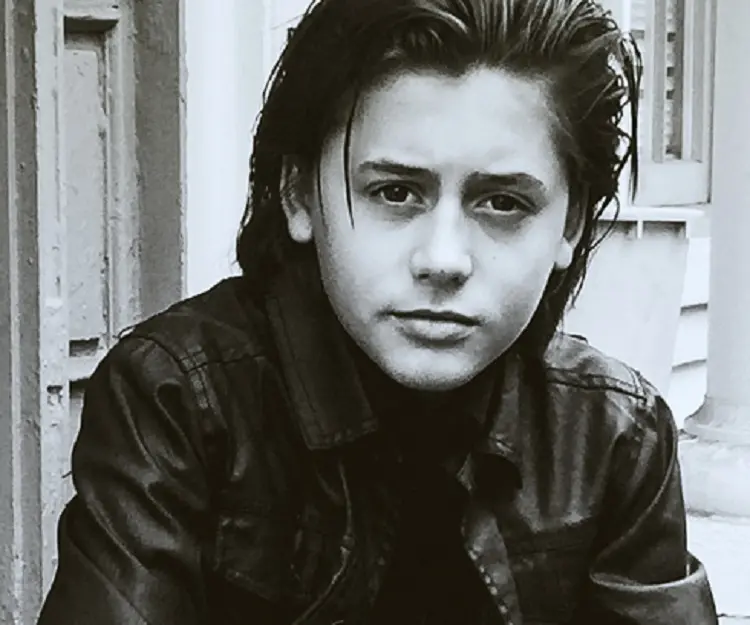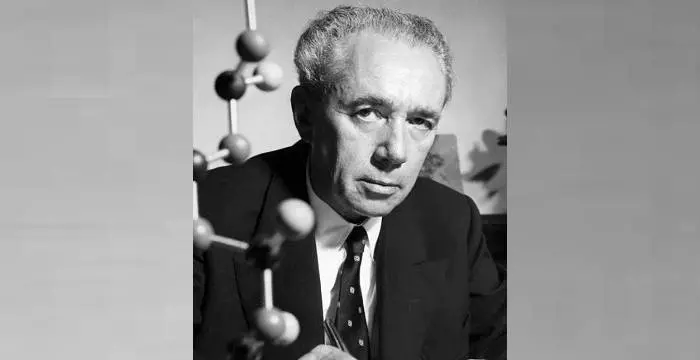
Paul Flory - Scientists, Timeline and Childhood
Paul Flory's Personal Details
Paul Flory was an American chemist considered as the founder of the science of polymers
| Information | Detail |
|---|---|
| Birthday | June 19, 1910 |
| Died on | September 9, 1985 |
| Nationality | American |
| Famous | Ohio State University, Scientists, Chemists |
| Spouses | Emily Catherine Tabor |
| Known as | Paul John Flory |
| Childrens | John Flory, Jr, Melinda Flory Groom, Susan Flory Springer |
| Universities |
|
| Notable Alumnis |
|
| Birth Place | Sterling, Illinois, U.S. |
| Gender | Male |
| Father | Ezra Flory |
| Mother | Martha Brumbaugh Flory |
| Sun Sign | Gemini |
| Born in | Sterling, Illinois, U.S. |
| Famous as | Chemist |
| Died at Age | 75 |
// Famous Ohio State University
Richard Lewis
Richard Lewis is an American comedian. This biography provides detailed information on his childhood, life, career, work, achievements and timeline.
Jeffrey Dahmer
Jeffrey Lionel Dahmer was an American was a serial killer and a sex offender. This biography of Dahmer profiles his childhood, life, criminal and sexual offences and timeline.
James Thurber
James Thurber was an American author, journalist and cartoonist, famously known for his short stories and cartoons in ‘The New Yorker’ magazine. This biography offers detailed information on his childhood, life, achievements and timeline.
Paul Flory's photo
Who is Paul Flory?
Paul Flory was an American chemist considered as the founder of the science of polymers. He was most reputed for his pioneering contributions in the field of polymers or macromolecules. His leading-edge scientific work in comprehending the behaviour of polymers in solution won him the prestigious ‘Nobel Prize in Chemistry’ in 1974 "for his fundamental achievements, both theoretical and experimental, in the physical chemistry of macromolecules". He examined properties of polymers and made significant contributions in comprehending solution thermodynamics, hydrodynamics, molar mass distribution, glass formation, crystallization, melt viscosity, elasticity and chain conformation. He found that growth of an increasing polymeric chain can stop if it reacts with other molecules that are present and in that case it initiates a new chain. The theory of polymer networks was developed by him to elucidate the method of gelation. Later he also developed a theory of anistropic solutions and a theory of rubber networks. Post retirement he worked in Eastern Europe and Soviet Union as a human rights advocate. He served in academic institutions as well as in industrial sector and he was immensely interested both in the theory of macromolecule as also in its practical uses. He received many awards apart from ‘Nobel Prize’ which included ‘Charles Goodyear Medal’ (1968), ‘Priestley Medal’ (1974) and the ‘National Medal of Science’ (1974).
// Famous Scientists
Juliane Koepcke
Juliane Koepcke is a German-Peruvian biologist, who was the lone survivor among the 92 passengers and crew of the ill-fated LANSA Flight 508 that crashed in the Peruvian rainforest on 24 December 1971. Know more about her life in this biography.
Henry Cavendish
Henry Cavendish was a theoretical chemist and physicist, renowned for discovery of hydrogen and calculation of the mass of earth. To know more about his childhood, profile, timeline and career read on
Konstantin Tsiolkovsky
Konstantin Tsiolkovsky was a Russian rocket scientist and a pioneer of astronautics. This biography provides detailed information about his childhood, family, personal life, career, achievements, etc.
Childhood & Early Life
He was born on June 19, 1910, in Sterling, Illinois. His father, Exra Flory was a clergyman-educator while his mother, Martha Brumbaugh Flory was a school teacher. He had two step-sisters, Margaret and Miriam, and one younger brother James.
He studied at ‘Elgin High School’ in Elgin, Illinois from where he completed his graduation in 1927.
Thereafter he enrolled at ‘Manchester College’ (presently ‘Manchester University’), a Brethren liberal arts college in North Manchester, from where he earned a BS in Chemistry in 1931. It is here that his interest in science, especially chemistry was infused by an exceptional professor, Carl W. Holl.
Encouraged by professor Holl, he applied and got enrolled at the Graduate School of ‘Ohio State University’ located at Columbus, Ohio. The chemistry department of the school was among the largest in the US. Here he developed immense interest in physical chemistry.
In 1934 he earned a PhD in Physical Chemistry from ‘Ohio State University’ submitting thesis on photochemistry of nitric oxide, which he carried out under supervision of Professor Herrick L. Johnston.
Career
After completing his PhD, Flory joined ‘Central Research Department’ of ‘E.I. du Pont de Nemours and Company’ in 1934. There he worked as a research chemist in a small team under Wallace Hume Carothers, an American chemist who invented nylon and neoprene. His curiosity regarding basics of polymerization and polymeric substances were aroused here following his association with Dr. Carothers.
Flory was designated to examine physical chemistry of polymers. He worked in the field of polymerization kinetics that is studying reaction rates of chemical processes in polymerization.
Regarding condensation polymerization, a type of step-growth polymerization, he disputed with the postulation that with growth of macromolecule, the reactivity of the end group deceases. He argued that reactivity of end group was independent of size of macromolecule and deduced that the number of chains present decrease exponentially with size.
Flory introduced the significant perception of ‘chain transfer’ (a polymerization reaction that results in transfer of the activity of a growing polymer chain to another molecule) in addition to polymerization for improvement of the kinetic equations and for better comprehension of polymer size distribution.
Following Dr. Carothers’s death in 1937, Flory started working at the ‘Basic Science Research Laboratory’ at the ‘University of Cincinnati’ from 1938. While serving there for two years he developed the theory of polymer networks to elucidate the method of gelation. During that tenure he also developed a mathematical theory for polymerization of those compounds that consist of more than two functional groups.
When the ‘Second World War’ broke, he began working in the industrial sector. From 1940 he started serving the laboratory of ‘Standard Oil Development Company’, in its Linden, NJ location. It is here that he initiated development of a statistical mechanical theory for polymer mixtures.
At that time research and development of rubber took prominence. In 1943 he joined Research Laboratory of ‘Goodyear Tire and Rubber Company’, and worked there as Director of Research till 1948, leading a team on polymer fundamentals.
He held the ‘George Fisher Baker Non-Resident Lectureship in Chemistry’ at the ‘Cornell University’ in the spring of 1948 after accepting invitation of Professor Peter J.W. Debye, the then Chairman of that Department. This stimulating experience and a subsequent offer of a professorship led him join the university in the fall of that year, and he served the post till 1957.
One of the most effective and fulfilling phases of his research career followed at the ‘Cornell University’. In 1949 he was initiated into the Tau Chapter of ‘Alpha Chi Sigma’ at the university.
In 1953 his chef d'oeuvre ‘Principles of Polymer Chemistry’, an elaborated and refined version of his Baker Lectures was published by ‘Cornell University Press’, which soon established itself as a standard text in the field of polymers and is used broadly till present.
He applied the concept of ‘excluded volume’ to polymers molecules, which was introduced by Swiss physical chemist Werner Kuhn in 1934. The concept elucidates that it is not possible for one of the parts of a long chain molecule to occupy a space which is already taken up by the molecule’s another part.
One of his significant accomplishments was the ‘Flory-Huggins Solution Theory’ an original procedure to calculate apparent size of a polymer in good solution. He also deduced the ‘Flory exponent’ that aids in distinguishing polymer movements in solution.
In 1957 he became Director of Research at the ‘Mellon Institute’, ‘Carnegie Mellon University’ and retained the position till 1961.
From 1961 to 1966 he served as Professor of Chemistry at the ‘Stanford University’ following which he became Jackson-Wood Professor of Chemistry at the university and served the position till his retirement in 1975.
He led an active life post retirement that saw him consulting ‘DuPont’ and ‘IBM’ for quite a while. He fought for the scientists who were oppressed, particularly in the Soviet Union and remained an advocate of the ‘Committee of Concerned Scientists’ and ‘Scientists for Sakharov, Orlov, and Shcharansky’ (SOS). In this pursuit he often spoke on the ‘Voice of America’ broadcast to the Eastern Europe and Soviet Union.
From 1979 to 1984 he worked for the ‘Committee on Human Rights’ of the ‘National Academy of Sciences’ and also remained a delegate at the Scientific Forum held in Hamburg in 1980.
More than 300 scientific writings were published by him. Two of his other notable books include ‘Statistical Mechanics of Chain Molecules’ published in January 1969 and ‘Selected Works of Paul J. Flory’ published in 1985.
Awards & Achievements
His work in the field of polymers won him the ‘Nobel Prize in Chemistry’ in 1974.
Personal Life & Legacy
In 1936 he married Emily Catherine Tabor and the couple was blessed with three children two daughters, Susan Flory Springer and Melinda Flory Groom and son John Flory, Jr. All his children pursued science and his son went on to become a geneticist.
On September 9, 1985, he succumbed to heart attack in his weekend home in Big Sur, California, at the age of 75.
Trivia
The Flory convention is named after him.
In 2002 he was inducted into the prestigious ‘Hall of Fame’ of ‘Alpha Chi Sigma’ posthumously.
// Famous Chemists
Henry Cavendish
Henry Cavendish was a theoretical chemist and physicist, renowned for discovery of hydrogen and calculation of the mass of earth. To know more about his childhood, profile, timeline and career read on
Walter Kohn
Nobel Laureate Walter Kohn was an Austrian-born American theoretical chemist and physicist. Check out this biography to know about his childhood, life, achievements, works & timeline.
Jabir Ibn Hayyan
Jabir Ibn Hayyan was a medieval era polymath. Check out this biography to know about his life, works and achievements.
Paul Flory's awards
| Year | Name | Award |
|---|---|---|
Other | ||
| 0 | Perkin Medal (1977) | |
| 0 | Elliott Cresson Medal (1971) | |
| 0 | Peter Debye Award (1969) | |
| 0 | Charles Goodyear Medal (1968) | |
| 0 | Nobel Prize for Chemistry (1974) | |
| 0 | National Medal of Science (1974) | |
| 0 | Priestley Medal (1974) | |
Paul Flory biography timelines
- // 19th Jun 1910He was born on June 19, 1910, in Sterling, Illinois. His father, Exra Flory was a clergyman-educator while his mother, Martha Brumbaugh Flory was a school teacher. He had two step-sisters, Margaret and Miriam, and one younger brother James.
- // 1927He studied at ‘Elgin High School’ in Elgin, Illinois from where he completed his graduation in 1927.
- // 1931Thereafter he enrolled at ‘Manchester College’ (presently ‘Manchester University’), a Brethren liberal arts college in North Manchester, from where he earned a BS in Chemistry in 1931. It is here that his interest in science, especially chemistry was infused by an exceptional professor, Carl W. Holl.
- // 1934In 1934 he earned a PhD in Physical Chemistry from ‘Ohio State University’ submitting thesis on photochemistry of nitric oxide, which he carried out under supervision of Professor Herrick L. Johnston.
- // 1934After completing his PhD, Flory joined ‘Central Research Department’ of ‘E.I. du Pont de Nemours and Company’ in 1934. There he worked as a research chemist in a small team under Wallace Hume Carothers, an American chemist who invented nylon and neoprene. His curiosity regarding basics of polymerization and polymeric substances were aroused here following his association with Dr. Carothers.
- // 1934He applied the concept of ‘excluded volume’ to polymers molecules, which was introduced by Swiss physical chemist Werner Kuhn in 1934. The concept elucidates that it is not possible for one of the parts of a long chain molecule to occupy a space which is already taken up by the molecule’s another part.
- // 1936In 1936 he married Emily Catherine Tabor and the couple was blessed with three children two daughters, Susan Flory Springer and Melinda Flory Groom and son John Flory, Jr. All his children pursued science and his son went on to become a geneticist.
- // 1937 To 1938Following Dr. Carothers’s death in 1937, Flory started working at the ‘Basic Science Research Laboratory’ at the ‘University of Cincinnati’ from 1938. While serving there for two years he developed the theory of polymer networks to elucidate the method of gelation. During that tenure he also developed a mathematical theory for polymerization of those compounds that consist of more than two functional groups.
- // 1940When the ‘Second World War’ broke, he began working in the industrial sector. From 1940 he started serving the laboratory of ‘Standard Oil Development Company’, in its Linden, NJ location. It is here that he initiated development of a statistical mechanical theory for polymer mixtures.
- // 1943 To 1948At that time research and development of rubber took prominence. In 1943 he joined Research Laboratory of ‘Goodyear Tire and Rubber Company’, and worked there as Director of Research till 1948, leading a team on polymer fundamentals.
- // 1948 To 1957He held the ‘George Fisher Baker Non-Resident Lectureship in Chemistry’ at the ‘Cornell University’ in the spring of 1948 after accepting invitation of Professor Peter J.W. Debye, the then Chairman of that Department. This stimulating experience and a subsequent offer of a professorship led him join the university in the fall of that year, and he served the post till 1957.
- // 1949One of the most effective and fulfilling phases of his research career followed at the ‘Cornell University’. In 1949 he was initiated into the Tau Chapter of ‘Alpha Chi Sigma’ at the university.
- // 1953In 1953 his chef d'oeuvre ‘Principles of Polymer Chemistry’, an elaborated and refined version of his Baker Lectures was published by ‘Cornell University Press’, which soon established itself as a standard text in the field of polymers and is used broadly till present.
- // 1957 To 1961In 1957 he became Director of Research at the ‘Mellon Institute’, ‘Carnegie Mellon University’ and retained the position till 1961.
- // Jan 1969 To 1985More than 300 scientific writings were published by him. Two of his other notable books include ‘Statistical Mechanics of Chain Molecules’ published in January 1969 and ‘Selected Works of Paul J. Flory’ published in 1985.
- // 1974His work in the field of polymers won him the ‘Nobel Prize in Chemistry’ in 1974.
- // 9th Sep 1985On September 9, 1985, he succumbed to heart attack in his weekend home in Big Sur, California, at the age of 75.
- // 2002In 2002 he was inducted into the prestigious ‘Hall of Fame’ of ‘Alpha Chi Sigma’ posthumously.
// Famous Gemini Celebrities peoples
Wentworth Miller
Wentworth Miller is an American actor and screenwriter who achieved recognition for his role in the TV series ‘Prison Break’.
Joyce Meyer
Joyce Meyer is a Christian author and speaker. This biography provides detailed information about her childhood, life, achievements, works & timeline
Zoe LaVerne
Zoe LaVerne is an American musical.ly star. Check out this biography to know more about her family, personal life, including her age, birthday, etc.
WolfieRaps
Check out all that you wanted to know about WolfieRaps, the famous YouTube Personality; his birthday, his family and personal life, his girlfriends, fun trivia facts and more.
Adam Saleh
Check out all that you wanted to know about Adam Saleh, the famous YouTube Personality; his birthday, his family and personal life, his girlfriends, fun trivia facts and more.
Isaak Presley
All about American actor and singer Isaak Presley including his age, birthday, family life, girlfriends, net worth, and some fun facts.
Paul Flory's FAQ
What is Paul Flory birthday?
Paul Flory was born at 1910-06-19
When was Paul Flory died?
Paul Flory was died at 1985-09-09
Where was Paul Flory died?
Paul Flory was died in Big Sur, California
Which age was Paul Flory died?
Paul Flory was died at age 75
Where is Paul Flory's birth place?
Paul Flory was born in Sterling, Illinois, U.S.
What is Paul Flory nationalities?
Paul Flory's nationalities is American
Who is Paul Flory spouses?
Paul Flory's spouses is Emily Catherine Tabor
Who is Paul Flory childrens?
Paul Flory's childrens is John Flory, Jr, Melinda Flory Groom, Susan Flory Springer
What was Paul Flory universities?
Paul Flory studied at Ohio State University, Manchester University (Indiana), Ohio State University
What was Paul Flory notable alumnis?
Paul Flory's notable alumnis is Ohio State University
Who is Paul Flory's father?
Paul Flory's father is Ezra Flory
Who is Paul Flory's mother?
Paul Flory's mother is Martha Brumbaugh Flory
What is Paul Flory's sun sign?
Paul Flory is Gemini
How famous is Paul Flory?
Paul Flory is famouse as Chemist
